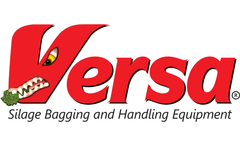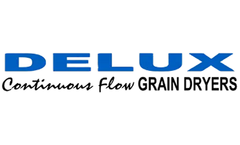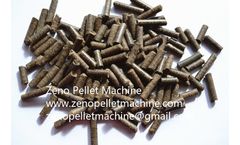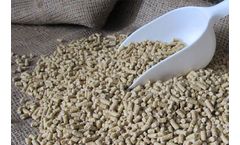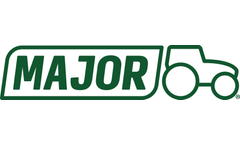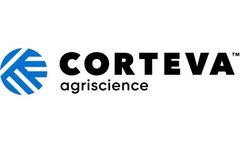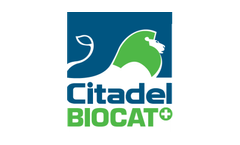Corn Harvesting Articles & Analysis
21 articles found
As a cost saving alternative to dry grain supplementation, bagged snaplage/earlage offers high energy content and easy digestibility Dietary supplementation with dry grains has traditionally been utilized as an economical way to meet the high energy demands of the herd, particularly when forage is scarce or of low quality. However, dairy farmers are increasingly turning to high moisture corn ...
Dairy customers needed feed, and an above average corn harvest was ready to be harvested in ...
In North America,they are mainly plant corn and wheat, which produces a large amount of straw every year. In Canadian agricultural areas, the farmer use corn harvesters to chop the corn stalks while harvesting ,and the chopped corn stalks are returned to the fields as fertilizer. ...
What do crop rotations look like? Corn tends to hold a lot of moisture and can artificially increase humidity levels around dairies. If the farms around yours plant and harvest corn year-after-year, then managing this humidity is something you will need to consider in your planning. ...
Here are several animal feed ingredients as follow: Feed Pellet Making Machine To Make Corn(maize) Corn is the main raw material of animal feed, generally fit accounted for about 60% of the diet. ...
On my family farm in North Central Iowa, like on many farms throughout the Corn Belt, it was so wet that we couldn’t get into the field to plant on schedule. ...
Maize harvest is particularly early this season. It also means early preparation to remove stalk stubble so insects like corn borers and leafrollers have no chance to leave everlasting damage to future crops. ...
The progress of the Crop Health Index for Brazil corn shows some of the same volatility as soy, as well as the same trend of lower than average health. ...
This often leads to significant investment in tools and time to measure yield closer to the field, potentially slowing down harvest operations. One missed load on a 100 ac field can lead to error of 0.5% (assuming 180 bu/ac corn and a load is 1000bu). ...
A corn combine harvester is a machine used for the corn harvest which both improves the harvest efficient and saves labor cost. Currently there are a variety of corn harvesters in the market, then how to choose a suitable corn combine harvester ...
Field applications evaluations of digestate from BioCat+ treated AD plants are under way in three locations in Europe. From initial results and observations it is apparent that the BioCat+ treated digestate has an improved symbiotic effect in the crop rhizosphere. Crops of wheat and maize recently harvested have shown increases in yields of up to 23% higher yields than previously achieved on the ...
In 2012, the global corn harvest came in at 852 million tons, while 654 million tons of wheat and 466 million tons of rice were produced. ...
Corn stover, left in fields after corn grain harvest, has been identified as a potential feedstock to help supply biofuel needed to offset a portion of the 14 million barrels of oils consumed daily by the U.S. transportation sector. ...
The objective of this study was to evaluate how an integrated crop–livestock system would influence weed biomass and weed species composition compared with a conventional, continuous corn (Zea mays L.) cropping system. The experimental farming system used in this study was established on a 90-ha site near Pana, IL, in 2002. The integrated system included two phases: (i) a ...
Cropping systems is potentially useful practice for mitigating nitrate leaching and increasing nitrogen use efficiency (NUE) because deeper rooted crops could capture the leached N from previous shallower rooted crops. The recovery of fertilizer nitrogen (FN) applied to maize (Zea mays L.) by the succeeding wheat (Triticum aestivum L.) in a winter wheat–summer maize rotation in North China Plain ...
Escalating fossil fuel cost and concern over global climate change have accelerated interest in cellulosic feedstocks, such as corn (Zea mays L.) cobs, for liquid fuel production. Little information is available about this plant organ. ...
Across-site analysis indicated that the manured treatment increased corn (Zea mays L.) yields significantly (alpha = 0.05), by 0.5 Mg ha–1 (11.5 vs. 11.0 Mg ha–1), with 67 kg ha–1 less purchased fertilizer N during the 3 yr of this study. However, there were environmental concerns: (i) Early fall manure spreading significantly increased fall nitrate (NO3) levels in the manured ...
Harvesting corn (Zea mays L.) residue in continuous corn (CC) may require changes in crop management for increased efficiency. ...
The emerging cellulosic-based ethanol industry will likely use corn (Zea mays L.) stover as a feedstock source. Growers wishing to maintain, or increase soil C levels for agronomic and environmental benefit will need to use C amendments such as manure, compost, or cover crops, to replace C removed with the corn stover. The objective of this research was to ...
Hail damage can be a serious problem on corn (Zea mays L.) grown for silage. The value of corn grown for silage is a function of both the yield and quality of the forage produced. An improved understanding of the effects of defoliation on forage quality would improve the ability of agronomists, farmers, and crop insurance adjusters to assess the economic impact ...

